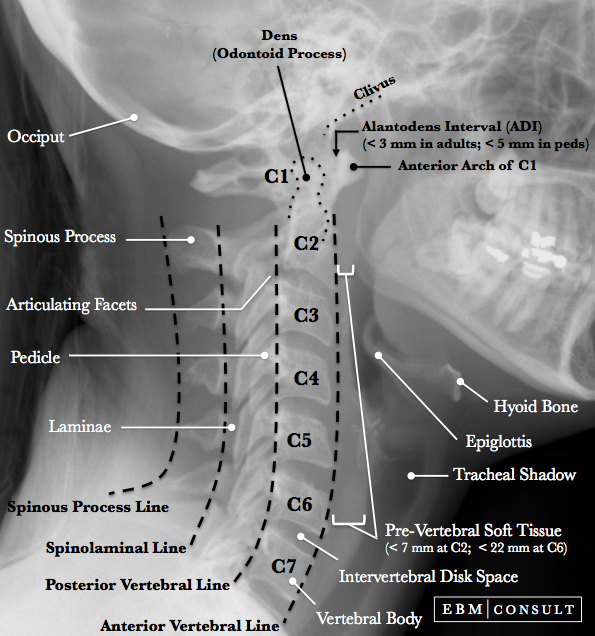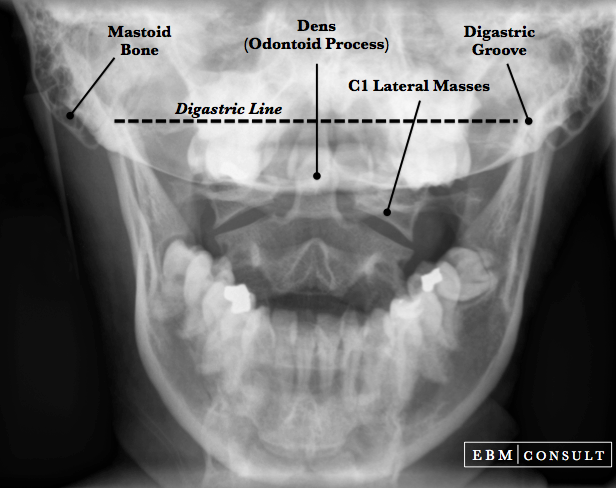Rule of Spence
Summary:
- The rule of Spence is a radiographic method that attempts to determine the integrity of the transverse ligament when doing an
open mouth (odontoid view) radiograph.
- If the combined measurement of the right and left lateral masses of C1 hang over the lateral masses of C2 by more than 6.9 mm then there should be concern for a possible transverse ligament injury and the patient should get an MRI or flexion or extension imaging.
- While the data supporting its ability to correlate it can be one of several radiographic methods when assessing for cervical spine injuries. If there is any doubt or concern, an MRI is warranted.
Rule of Spence
|
|---|






